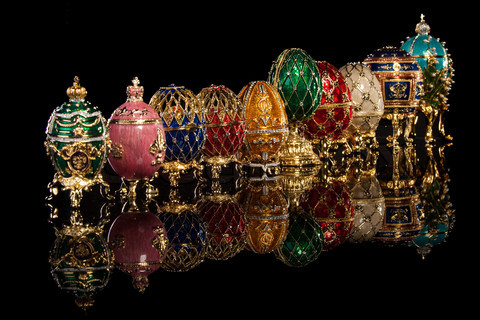
Viktor Vasnetsov, "Kashchey the Immortal"
Andreas Johns points out that it's ironic that Koschei is sometimes referred to as "Koschei the Deathless," because in the stories in which he appears, he is inevitably killed by the hero. Yet the term "Deathless" could refer not just to the fact that he is difficult to kill, but the fact that he keeps his "death" outside of himself. It's interesting that the egg should have such negative connotations, since usually eggs are associated with life/birth/resurrection, but the egg can also be said to contain his soul. In one tale, the hero Vasilii uses the same egg to kill Koschei as to revive his birth father, so sometimes (although rarely) the egg can have life-giving properties.
Ivan Bilibin
The storing of the soul within multiple objects gives Koschei protection, as it's more difficult to find and to get to, but the reciting of the egg's location has a lilting rhythm to it that is more obvious in Russian but even evident in English ("in an egg, in a duck, in a hare, in a chest..."). In fact, the Russian phrase that often begins the series, "On the sea, on the ocean, on Buian Island" also occurs in East Slavic incantations. Johns suggests that tale tellers were either familiar with incantations, or practitioners of spells themselves. Irina Razumova suggests that both genres come from a culture which believes in the magic power of words.

Although the Death Egg is almost always Koschei's, there are exceptions; in one tale type a maiden's love is contained in the egg hidden within the series of objects, and in one tale it's Baba Yaga whose soul is hidden in the egg. But whoever is hiding their soul in eggs, the hero of the tale is bound to discover the information and smash the egg anyway. We can look at Koschei as a reminder of the inevitability of death-you can try to prolong life, but it will catch up to you in the end. From the other perspective, it's encouraging to see that even the most difficult obstacles can be overcome by the hero, and good triumphs.
Source: Andreas Johns, Baba Yaga: The Ambiguous Mother and Witch of the Russian Folktale
Faberge Eggs-a royal Russian Easter tradition






Perhaps a modern version of sorts of this trope can be seen in Voldemort´s horcruxes in the Harry Potter series. While they are not directly nested in each other, the way they are introduced in the books presents them as a series of objects, and getting and destroying them is a series of challenges, each harder than the other. And incidentally, the last Horcrux that was consciously created by Voldemort is Nagini the serpent - an animal hatched from an egg.
ReplyDeleteYes, I thought so when I was reading Harry Potter, which uses a lot of other tropes from fairy tales, so why not this one as well? I admit I hadn't thought of the connection with Nagini being hatched from an egg! :-)
DeleteI love connections like this!
DeleteThe belief that life force can be hiden outside the body is quite old. The oldest variant I am familiar with is the Tle of Two Brothers from Ancient Egypt (written down roughly around 1300 BC) in which the protagonist Bata hids his heart within a Cedar and and dies when the cedar is cut down, but later revived by his brother who put a cone of the cedar in fresh water which made it sprout.
ReplyDeleteWhile nowadays most scholars no longer belief that the Tale of Two Brothers is an authetic manuscript of an actual fok tale, most agree that many elements from folklore and popular belief were incorporated into it.
The egg seems to be the most popluar hiding place in northern European culture, as I am familar with stories featuring an egg from Russia, Norway and Germany, though the Aarne-Thompson Index curiosly names a bee's nest as the most common hiding place (I'm personaly not familar with a story featuring a bee's nest in that context).
Many fairy tales from other countries seem to be inspired by the tale of Kotschei, particularly those that came after Alexander Afanasyev's collection), but many also contain story elements absent from "Kotschei, The Deathless", for example the motif of 6 (or 7) brothers searching for 6/7 sisters to marry seems to come up quite often.
Fascinating, as always! Just curious, are you a fairy tale scholar yourself/what is your background?
Delete